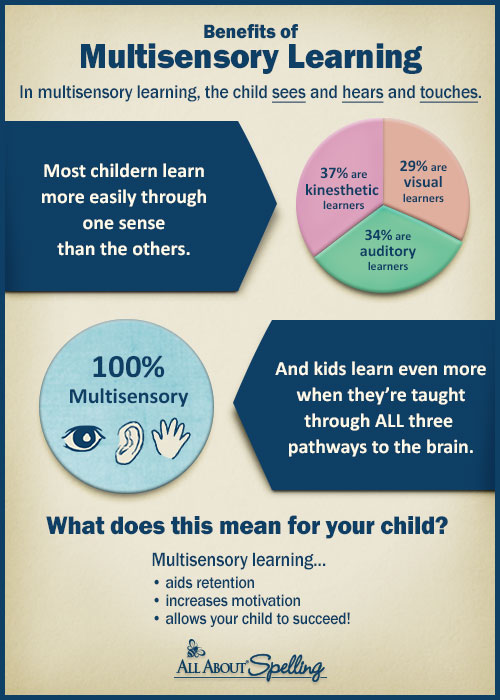Multisensory Research : Why Use Multisensory Instruction?
Does multisensory research support your use of multisensory teaching?
Reason # 1 – Learner Engagement
Multisensory research says, “If you really want to engage learners, try taking a multisensory approach. Presentations that appeal to auditory, visual, and kinesthetic modalities simultaneously connect more deeply and have a lasting impact,” (Maal, 2004)
Reason # 2 – Greater Capacity for Learning
Multisensory research says, “Recent research in the field of ‘multiple intelligence / emotional intelligence’ into how we learn, suggests that diversity of sensory and intellectual stimuli is key to increasing our capacity for learning,” (Westley, 2003).
Multisensory research says, Hearing information, presented simultaneously with iconic visual input, is the most effective means of instructing. Using two channels of processing, simultaneously, allows the brain to process the information all at once and improves recall pathways through one channel or the other (Tiene, 2000).
Reason # 3 – Greater knowledge transfer
Multisensory research says: R.D. Farkus’ 2003 study found that multisensory instructional resources significantly influence academic achievement, lead to improved attitudes towards learning, increase empathetic response, and indisputably yields a greater transfer of skills. Farkus says, “Schools <teachers> that provide instruction through learning-style methods, therefore, offer greater opportunities for students to succeed than do schools <teachers> that practice traditional teaching and learning, which seems to be an inferior approach,” (Farkus, 2003).
Reason # 4 – Improved attitudes towards learning
Multisensory research says, “students indicated significantly more positive attitudes when instructed with a multisensory rather than traditional approach, and performance was higher on the transfer of skills when students were instructed with a multisensory instructional method rather than with a traditional approach,” (Farkus, 2003)
Reason # 5 – Greater Achievement
Multisensory research says, “Achievement scores of students who were taught with instructional resources that matched their preferred modalities were statistically higher than were the scores attained by students who were not taught with learning-styles methods. Moreover, when students were taught with multisensory instructional resources, although initially through their most preferred modality, and then received reinforcement through their secondary or tertiary modality, scores further increased,” (Farkus, 2003).
“The average student whose learning styles were accommodated could achieve at the 77th percentile of the distribution of the control-group of students,” (Farkus, 2003).
It’s important to note that multisensory instruction is at the heart of the Orton-Gillingham methodology for teaching reading to kids with dyslexia. It is the most widely used, successful way to teach kids with reading disabilities with success.
As you proceed through this multisensory training, you will learn about teaching various subjects using multisensory teaching. You will be given lists of activities you can use for creating multisensory lessons. And, I’ll teach you how to create multisensory lessons.
Going through this complete multisensory tutorial will teach you all of the basics for using PROVEN multisensory teaching methods.





